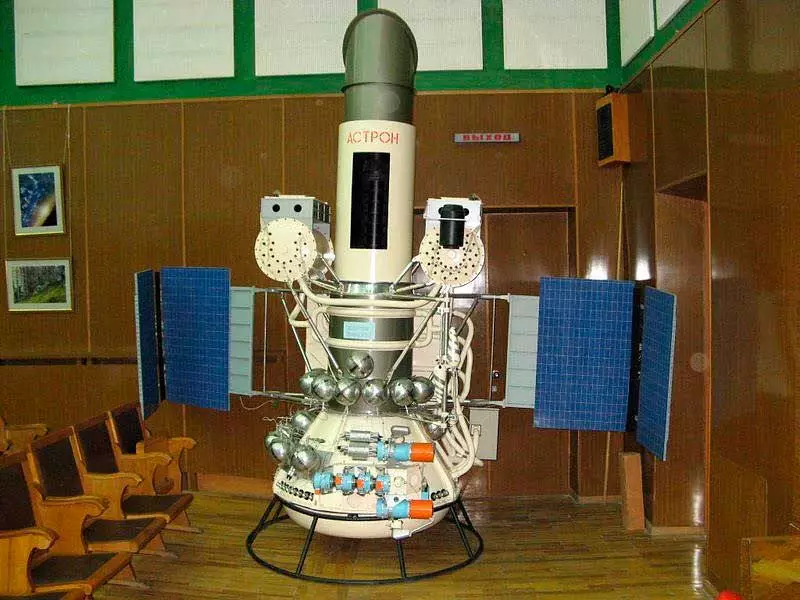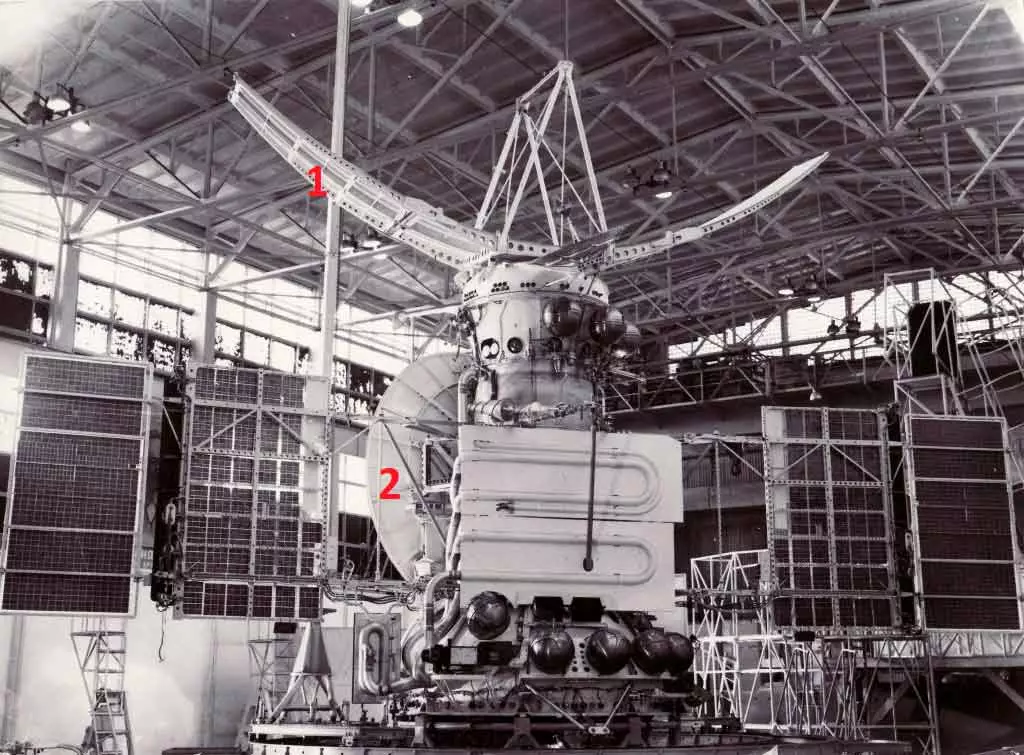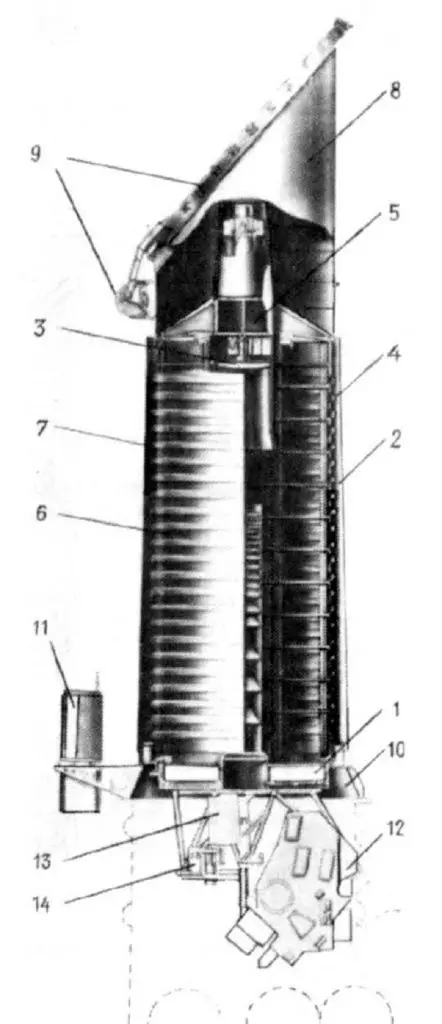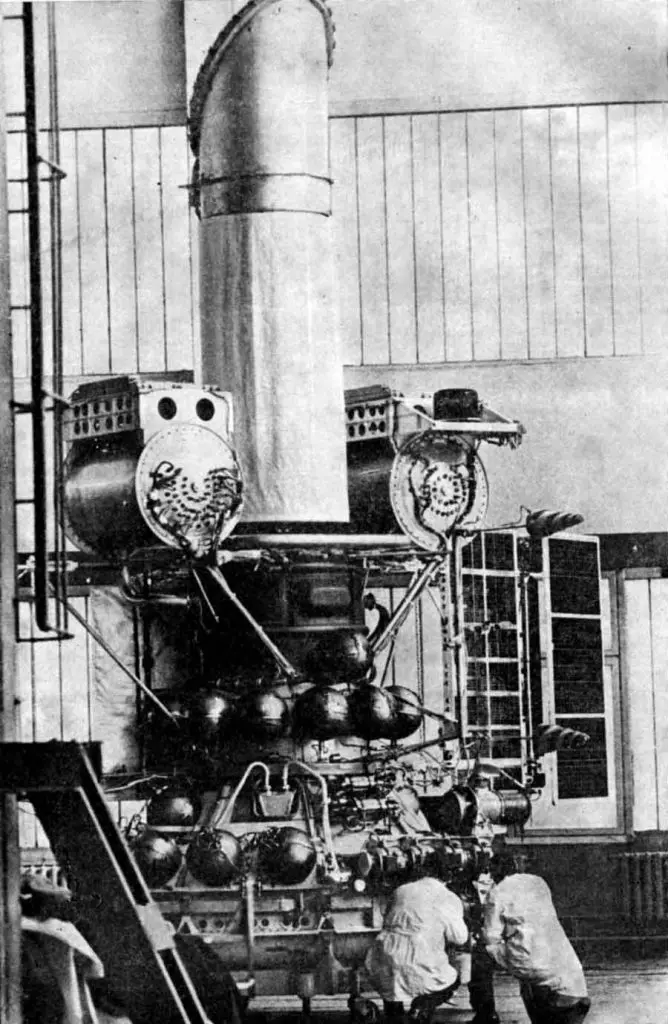When it comes to space telescopes, many people first remember Hubble, although over the past decades engineers have sent many significant missions into space. One of the most interesting - "Astron" is a little-known, but quite successful, launched by the Soviet Union 38 years ago, on March 23, 1983. This mission worked in orbit for eight years instead of the scheduled year and gathered a valuable luggage of knowledge about distant quasars, stars and galaxies.
We will introduce our readers with the Soviet Astronomical Observatory and tell what results this mission has achieved.

Space automatic station "Astron". What did she imagine?
Since the late 1970s, Soviet scientists wanted to create a domestic system that could have been able to spend astronomical observations of stars, active galaxies and other objects in ultraviolet and X-ray bands. In X-ray, quasars, black holes and other interesting bodies for astronomers, and ultraviolet radiation of stars tells about their chemical composition and temperature.
The problem is that X-rays do not reach the Earth, they are absorbed by the dense layers of the atmosphere, the same happens with UV radiation, the surfaces reach UV rays only a certain wavelength (315-400 nm), but they are not so interesting to science . Therefore, to conduct observations in these ranges, you need to rise to the height, where the atmosphere does not prevent.
The scientific part of the Astron program was answered by the team of the Crimean Astrophysical Observatory under the leadership of Physics Alexander Boyarchuk (1931-2015), as well as the French CNES Space Agency. For the development of the apparatus, on which scientific instruments were supposed - the Final Council Bureau of the NGO named after S. Lavochkina. By that time, the Bureau specialists built not one planetary probe.
Soviet engineers decided not to create a "basic" carrier of the future observatory from scratch, but to choose a finished station that successfully worked in space. There were two reasons for it:
- to quickly prepare an experiment;
- To save on the project.
It was necessary to be a device that would suit a number of harsh requirements. Namely:
- could carry a very overall payload in the form of an optical telescope with a spectrometer to register the spectra of galaxies and stars in the UV band and the X-ray telescope spectrometer;
- was well protected from the thermal effects of our Sun;
- I could stay in orbit, on which the effect of the radiation belt of the Earth would be minimal.
The Soviet Union had such an apparatus. In all the requirements, the Venus series was suitable, namely Venus-15.

True, before placing the telescopes on board the station, it changed a little. It was removed from it a motor installation, which took the station on the trace of the interplanetary flight of Earth-Venus and a side view locator, instead of them put a special cylinder to which two telescopes were attached, solar panels, fuel tanks with compressed gas so that the station orientation can be changed, radiators , instrument compartment with electronics, antenna.

Engineers have changed and the location of optical-electronic sensors responsible for navigating the "astronomer". If they were left the same way as they stood on "Venus-15", according to the signals of the sensors, the station would rotate around its longitudinal axis, and the ultraviolet telescope could not change the orientation in space, and, as a result, could not explore the maximum Sky area.
Tools "Astrona"
The main scientific device "Astronomer" is an ultraviolet two-metering system "Speckey". She weighed about 400 kg. The diameter of the main mirror is 80 cm, the focal length is 8 m, the diameter of the secondary mirror is 26 cm, the focal length is 2.7 m. The system was very compact and provided a large field of view with good image quality.
The set with a telescope included an ultraviolet SPS spectrometer, which was developed in conjunction with France. The device had three input diaphragms that allowed to study three types of objects: bright stars, weak body radiation and extended cosmic bodies, such as nebula, comet. The tool recorded radiation in wavelength intervals from 110 to 350 nm and from 170 to 650 nm.

Another scientific instrument "Astronomer" is the X-ray telescope-spectrometer of the TCR-02M, which was created in the walls of the Institute of Space Research by the Academy of Sciences of the USSR under the leadership of Astrophysics Andrei North from the State Astronomical Institute. Sternberg. The device consisted of a pair of detectors and electronic blocks and allowed to study compact objects, such as neutron stars, white dwarfs. Detectors recorded X-ray radiation in the range from 2 to 25 keV and could measure every 2.28 milliseconds, which made it possible to monitor the rapidly changing energy events.

What knowledge got "Astron"?
On March 23, 1983, the Proton carrier rocket delivered the Soviet Space Observatory. Perigue of the telescope orbits (the orbit closest to Earth) was at an altitude of 2,000 km, and apogee (most remote from the ground point of orbit) at an altitude of 200,000 km. Such an orbit allowed an "astron" 90% of the time to conduct scientific research in non-radiation belts of the Earth, charged particles of which could affect the operation of the equipment. In addition, this orbit "saved" from a strong glow of the geocongeon, which limits the sensitivity of UV studies.
Another plus of this orbit - Soviet experts could almost continuously monitor "Astron" from their ground items, which allowed them to establish with the Observatory to 200 radio sessions during the year.
[Article on the topic: As the US and the USSR, the moon wanted to blame]
"Astron" conducted observations 3-4 hours a day. The telescope could scan the celestial sphere in 12 minutes, while performing for one session to 70,000 measurements. The station worked in mode, in the case of the detection of a gamma burst or another energy event could be quickly rotated in the desired direction to direct its ultraviolet and X-ray devices to the source.
During the work in orbit, Astronus received data on hundreds of X-ray sources, dozens of quasars and galaxies.
In April 1986, the Soviet Observatory conducted an ultraviolet study of the Comet Halley and helped scientists to find out the exact rate of evaporation of the cometic substance, the expiration of powerful gas flows when approaching the Sun.

Also, Soviet scientists used "Astron" for UV observations of ozone in the Earth's atmosphere, to understand how launch missiles affect the ozone layer. This information was necessary for both environmental and military studies.
In 1987, scientists used the Soviet Observatory and for supernova observations. In February, our planet has reached the light of the outbreak of supernova SN 1987A, which occurred in the dwarf galaxy a large magtel cloud. It was the brightest and most close outbreak of supernova since the invention of telescopes. "Astron" one of the first to surveillance this event, the study went for 15 months. Soviet astrophysicists found out that SN 1987A did not arise during the outbreak of a cold star of high luminosity, as many experts believed at the time, and when the heated supergiant is outbreak.

Here are some other discoveries of Astrona. With the help of a telescope, it was possible to detect that:
- Even from stationary stars, a substance may be emitted, and, in huge quantities, up to several hundred million tons per second. Interestingly, than a hot star, the stronger the release, speed sometimes reaches more than 1000 km / c;
- In the chemical composition of the atmosphere of some stars, a high concentration of uranium, lead, tungsten was found. From where these elements appeared there, not yet clear;
These and other data helped to better understand the evolution of stars and galaxies, and also became a valuable source of information for astrophysics.
The Astron project also helped solve a number of important technical tasks. For example, specialists managed to create a system of astrojector, which could lead a telescope with high accuracy. It turned out to be made thin and very light mirrors, as well as develop a highly efficient technology of their protective coatings, manufacture a telescope body capable of withstanding thermal exposure and prevent light scattering.
Eight years of work
After the first year of work in orbit in the Astrona fuel tanks, there was still enough compressed gas for maneuvering, and the devices were in good condition, so scientists decided to extend the work of the telescope.
In 1989, the Observatory exhausted fuel reserve and practically lost opportunities to bring their tools to goal. The last session of radio communications with Astronomer took place on March 23, 1991, after which the mission officially ended. In space, the telescope worked for eight years.
For a successful mission, the team of Soviet engineers and astrophysicists was awarded the State Prize of the USSR.
The sources that the author used when preparing the material:- the document in the Presidium of the Academy of Sciences of the USSR "Orbital Astronomical Observatory" Astron ", which was prepared by Astrophysician Andrey Northern;
- The book "Astrophysical studies at the Astron Space Station." Edited by A.A. Boyarchuk:
- Article: "Space studies performed in the Soviet Union in 1983"
- Article "Astron: Venera TURNED SPACE TELESCOPE"
We offer friendship: Twitter, Facebook, Telegram
See us on YouTube. Watch all new and interesting from the world of science on our Google news page. Read our materials not published on Yandex Zen
